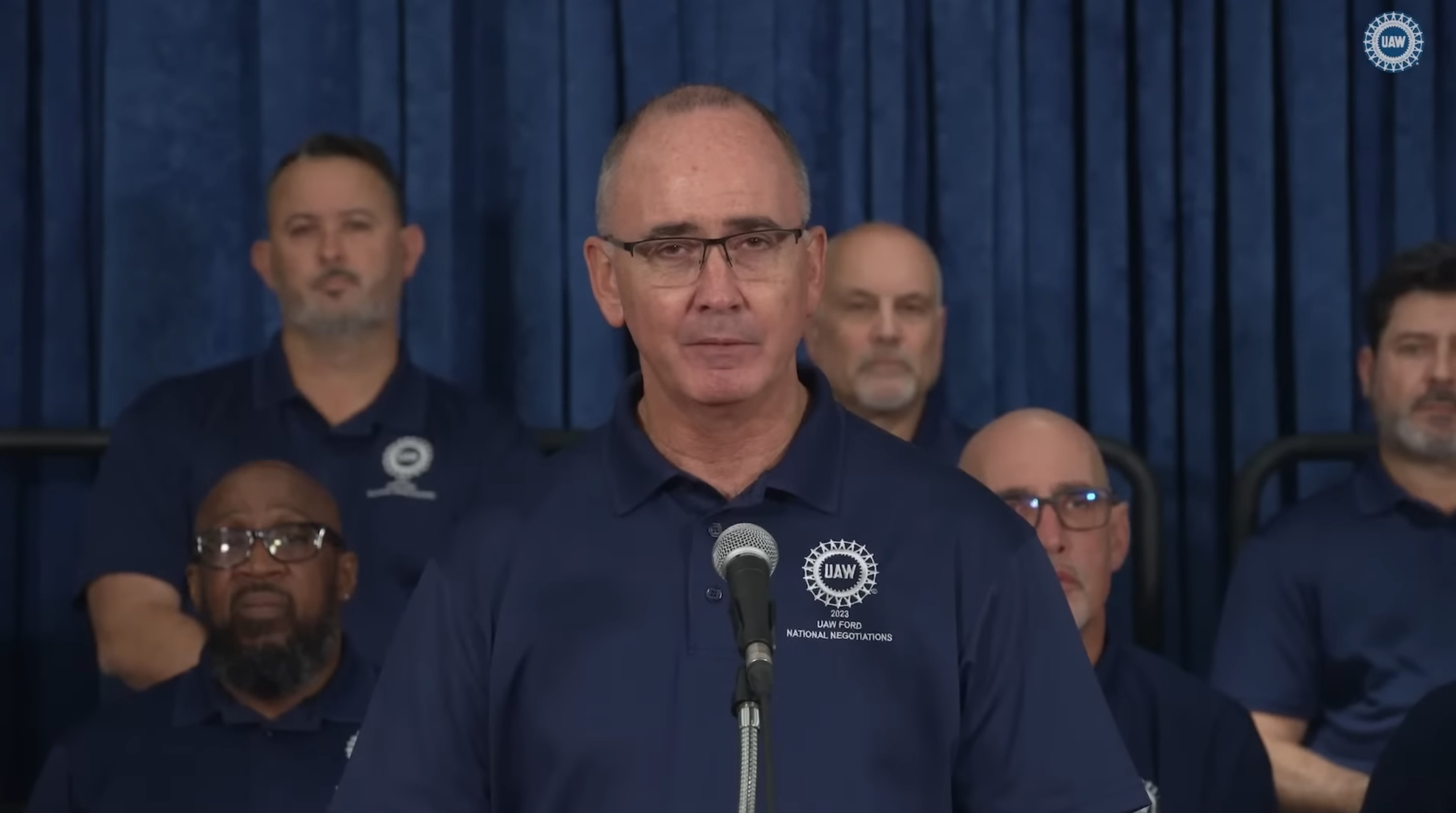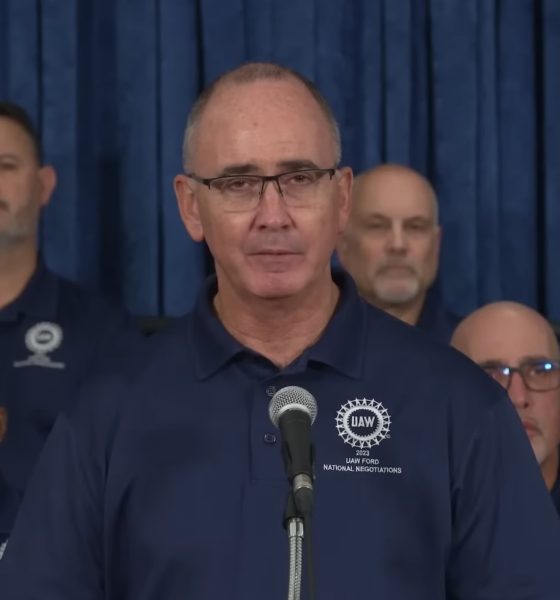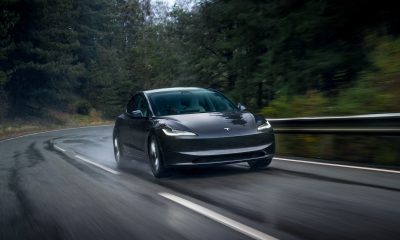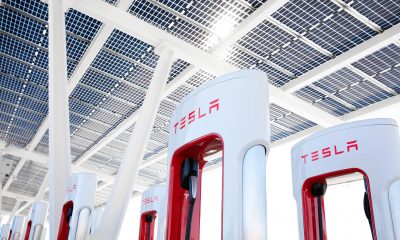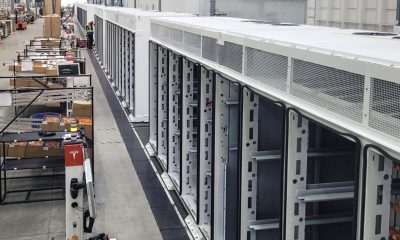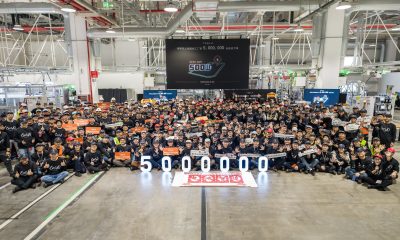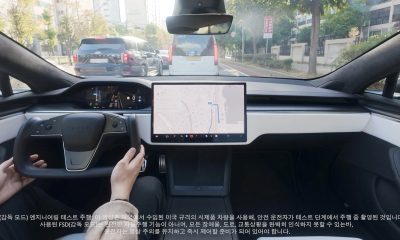The United Auto Workers (UAW) has successfully agreed on tentative contracts with Ford, General Motors (GM) and Stellantis after over six weeks of strikes. However, the union’s president now says that the next round of contract negotiations will include more than just the Big Three, highlighting desires to unionize other automakers like Tesla, Toyota, Volkswagen and others.
UAW President Shawn Fain said on Sunday that the next round of bargaining, set for 2028 when contracts expire again, will include more than just the Big Three, instead including a “Big Five or Big Six,” as detailed in a report from Bloomberg. The statements came after it has been widely speculated that Fain and the UAW might target Tesla next now that the union has come to tentative agreements with Ford, Stellantis and GM.
“One of our biggest goals coming out of this historic contract victory is to organize like we’ve never organized before,” Fain said. “When we return to the bargaining table in 2028, it won’t just be with a Big Three, but with a Big Five or Big Six.”
Earlier this month, Fain also called workers at Tesla, Toyota, Honda and others “UAW members of the future,” highlighting his ambitions to boost membership to include the automakers.
UAW President: Tesla workers are union “members of the future”
Tesla and other automakers, such as Toyota and Volkswagen, have U.S. facilities, though the UAW does not represent workers at those sites. Tesla is not a surprise target for the UAW, being the world’s most valuable automaker and the dominant market leader in electric vehicles (EVs), along with employing tens of thousands of U.S. workers in California, Texas, Nevada and New York.
According to a person familiar with the matter in the Bloomberg report, Tesla’s factory in Fremont, California, has a UAW organizing committee, and its members are actively talking to workers about the benefits of unionization and collective bargaining. The person also said that the UAW has shared its commitment to offering any needed resources for that campaign.
However, past unionization attempts at Tesla have failed, and CEO Elon Musk has been outspoken about his disdain for unions on many occasions. Last year, Musk invited the UAW to hold a vote at its Fremont factory, though it never took place.
A union is just another corporation. Far better for many companies to compete for your skills, so that you have maximum optionality.
— Elon Musk (@elonmusk) May 26, 2022
Labor efforts in other industries show that the landscape has changed since one Tesla worker at the Fremont factory went public with attempts to have the UAW unionize the plant in 2017. At the time, Musk also opposed the attempt, calling the union drive “morally outrageous,” and the campaign faded away after a few years.
“The UAW would love to get into Tesla, but I don’t think they have a chance,” said former Fremont employee Mark Eberley, who worked on a UAW drive at Tesla prior to his departure in 2020.
Others who previously worked at Tesla told Bloomberg that corruption scandals at the UAW and the switch to become a non-union factory when the automaker purchased the plant in 2010 were both viewed as liabilities to a unionization effort. In 2020, former UAW President Dennis Williams pleaded guilty to conspiracy to embezzle union funds after serving as the group’s leader from 2014 to 2018.
Despite the scandal, Fain and the UAW’s success in coming to a tentative agreement with the Big Three comes at a time when several other labor efforts have also taken shape. Additionally, Gallup data shows that the U.S. public has shifted in its views on unions since the last unionization efforts at Tesla. While just over half of Americans reported approving of labor unions in 2016, that number has risen to roughly 67 percent in 2023.
“Any effort to organize Tesla would be a battle royale,” said Seth Harris, President Joe Biden’s former deputy director at the National Economic Council. “The UAW is showing itself to be a militant, well-organized force.”
What are your thoughts? Let me know at zach@teslarati.com, find me on X at @zacharyvisconti, or send your tips to us at tips@teslarati.com.

News
Tesla teases new market entrance with confusing and cryptic message

Tesla teased its entrance into a new market with a confusing and what appeared to be cryptic message on the social media platform X.
The company has been teasing its entrance into several markets, including Africa, which would be a first, and South America, where it only operates in Chile.
In September, Tesla started creating active job postings for the Colombian market, hinting it would expand its presence in South America and launch in a new country for the first time in two years.
The jobs were related to various roles, including Associate Sales Manager, Advisors in Sales and Delivery, and Service Technicians. These are all roles that would indicate Tesla is planning to launch a wide-scale effort to sell, manage, and repair vehicles in the market.
Last night, Tesla posted its latest hint, a cryptic video that seems to show the outline of Colombia, teasing its closer than ever to market entry:
— Tesla North America (@tesla_na) November 12, 2025
This would be the next expansion into a continent where it does not have much of a presence for Tesla. Currently, there are only two Supercharger locations on the entire continent, and they’re both in Chile.
Tesla will obviously need to expand upon this crucial part of the ownership experience to enable a more confident consumer base in South America as a whole. However, it is not impossible, as many other EV charging infrastructures are available, and home charging is always a suitable option for those who have access to it.
Surprisingly, Tesla seems to be more concerned about these middle-market countries as opposed to the larger markets in South America, but that could be by design.
If Tesla were to launch in Brazil initially, it may not be able to handle the uptick in demand, and infrastructure expansion could be more difficult. Brazil may be on its list in the upcoming years, but not as of right now.
News
Tesla expands crucial Supercharging feature for easier access
It is a useful tool, especially during hours of congestion. However, it has not been super effective for those who drive non-Tesla EVs, as other OEMs use UI platforms like Google’s Android Auto or Apple’s iOS.
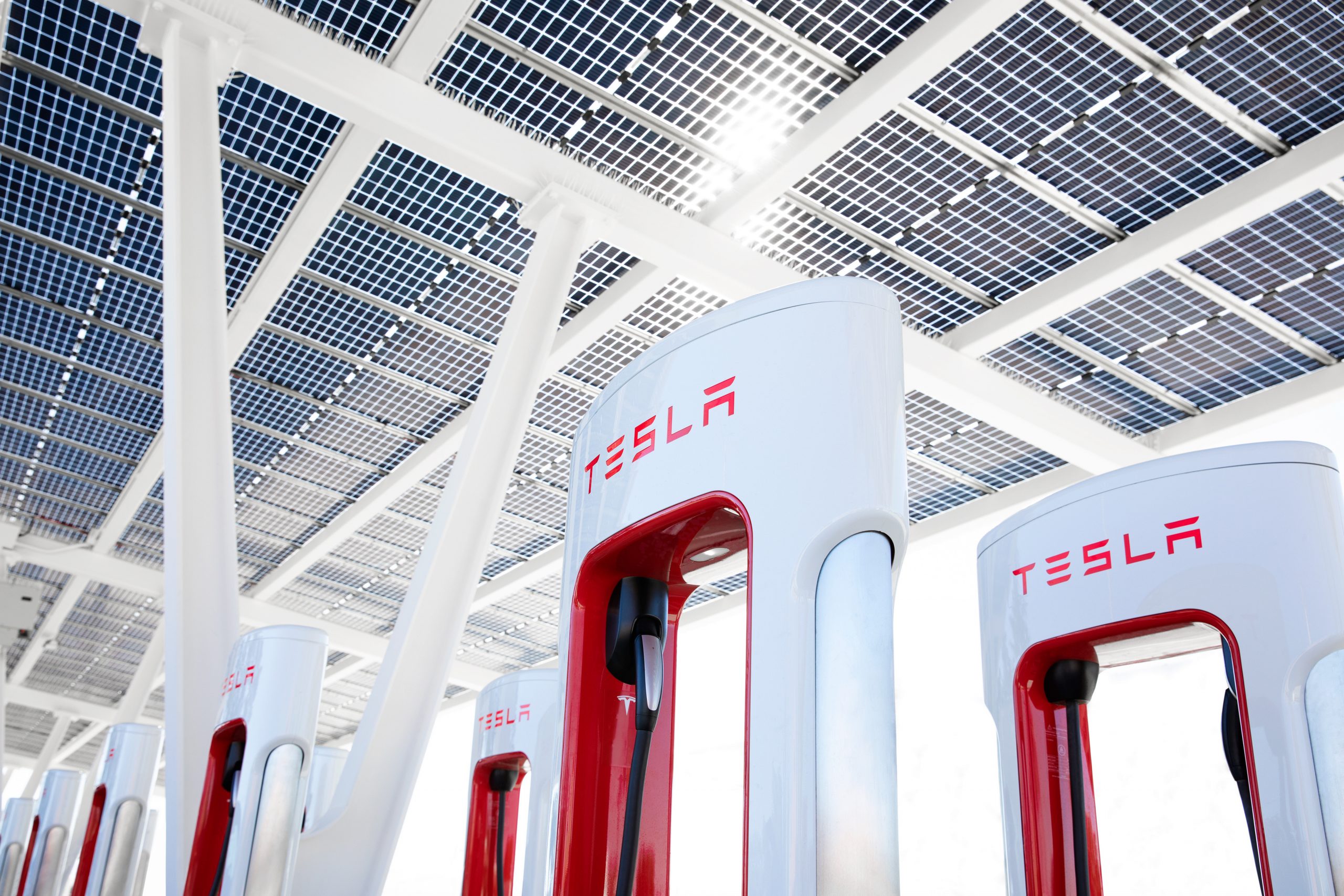
Tesla has expanded a crucial Supercharging feature that helps owners identify stall availability at nearby locations.
Tesla said on Tuesday night that its “Live Availability” feature, which shows EV owners how many stalls are available at a Supercharger station, to Google Maps, a third-party app:
Live availability of Superchargers now in Google Maps pic.twitter.com/DJvS83wVxm
— Tesla Charging (@TeslaCharging) November 11, 2025
Already offering it in its own vehicles, the Live Availability feature that Teslas have is a helpful feature that helps you choose an appropriate station with plugs that are immediately available.
A number on an icon where the Supercharger is located lets EV drivers know how many stalls are available.
It is a useful tool, especially during hours of congestion. However, it has not been super effective for those who drive non-Tesla EVs, as other OEMs use UI platforms like Google’s Android Auto or Apple’s iOS.
Essentially, when those drivers needed to charge at a Supercharger that enables non-Tesla EVs to plug in, there was a bit more of a gamble. There was no guarantee that a plug would be available, and with no way to see how many are open, it was a risk.
Tesla adding this feature allows people to have a more convenient and easier-to-use experience if they are in a non-Tesla EV. With the already expansive Supercharger Network being available to so many EV owners, there is more congestion than ever.
This new feature makes the entire experience better for all owners, especially as there is more transparency regarding the availability of plugs at Supercharger stalls.
It will be interesting to see if Tesla is able to expand on this new move, as Apple Maps compatibility is an obvious goal of the company’s in the future, we could imagine. In fact, this is one of the first times an Android Auto feature is available to those owners before it became an option for iOS users.
Apple owners tend to get priority with new features within the Tesla App itself.
Elon Musk
Elon Musk’s Boring Co goes extra hard in Nashville with first rock-crushing TBM
The Boring Company’s machine for the project is now in final testing.
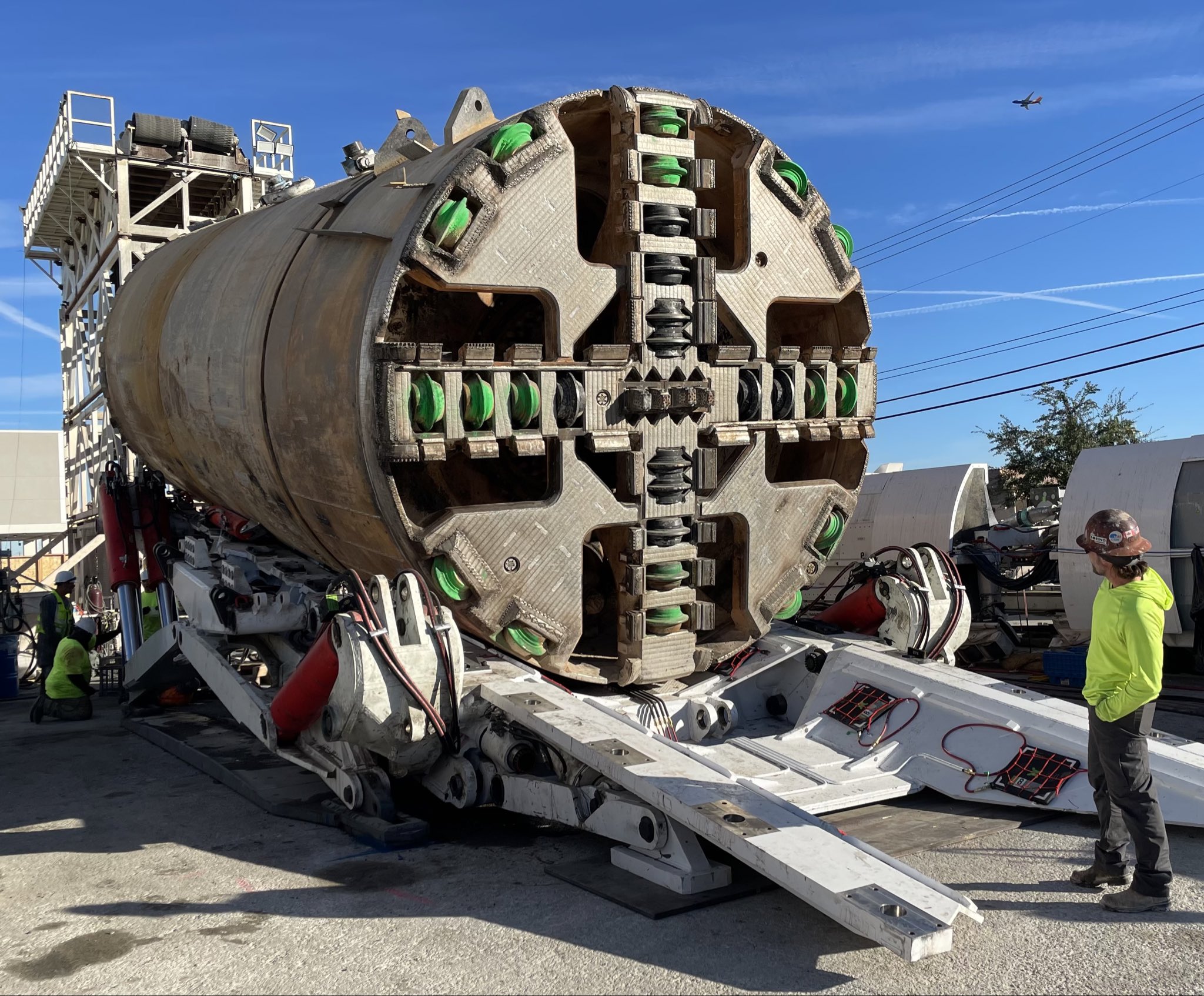
The Boring Company is gearing up to tackle one of its toughest projects yet, a new tunnel system beneath Nashville’s notoriously tough limestone terrain. Unlike the soft-soil conditions of Las Vegas and Austin, the Music City Loop will require a “hard-rock” boring machine capable of drilling through dense, erosion-resistant bedrock.
The Boring Company’s machine for the project is now in final testing.
A boring hard-rock tunneling machine
The Boring Company revealed on X that its new hard-rock TBM can generate up to 4 million pounds of grip force and 1.5 million pounds of maximum thrust load. It also features a 15-filter dust removal system designed to keep operations clean and efficient during excavation even in places where hard rock is present.
Previous Boring Co. projects, including its Loop tunnels in Las Vegas, Austin, and Bastrop, were dug primarily through soft soils. Nashville’s geology, however, poses a different challenge. Boring Company CEO and President Steve Davis mentioned this challenge during the project’s announcement in late July.
“It’s a tough place to tunnel, Nashville. If we were optimizing for the easiest places to tunnel, it would not be here. You have extremely hard rock, like way harder than it should be. It’s an engineering problem that’s fairly easy and straightforward to solve,” Davis said.
Nashville’s limestone terrain
Experts have stated that the city’s subsurface conditions make it one of the more complex tunneling environments in the U.S. The Outer Nashville Basin is composed of cherty Mississippian-age limestone, a strong yet soluble rock that can dissolve over time, creating underground voids and caves, as noted in a report from The Tennessean.
Jakob Walter, the founder and principal engineer of Haushepherd, shared his thoughts on these challenges. “Limestone is generally a stable sedimentary bedrock material with strength parameters that are favorable for tunneling. Limestone is however fairly soluble when compared to other rack materials, and can dissolve over long periods of time when exposed to water.
“Unexpected encounters with these features while tunneling can result in significant construction delays and potential instability of the excavation. In urban locations, structures at the ground surface should also be constantly monitored with robotic total stations or similar surveying equipment to identify any early signs of movement or distress,” he said.
-

 News5 days ago
News5 days agoTesla shares rare peek at Semi factory’s interior
-

 Elon Musk5 days ago
Elon Musk5 days agoTesla says texting and driving capability is coming ‘in a month or two’
-

 News4 days ago
News4 days agoTesla makes online ordering even easier
-

 News4 days ago
News4 days agoTesla Model Y Performance set for new market entrance in Q1
-

 News5 days ago
News5 days agoTesla Cybercab production starts Q2 2026, Elon Musk confirms
-

 News5 days ago
News5 days agoTesla China expecting full FSD approval in Q1 2026: Elon Musk
-

 News6 days ago
News6 days agoTesla Model Y Performance is rapidly moving toward customer deliveries
-
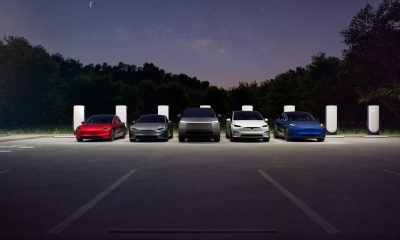
 News3 days ago
News3 days agoTesla is launching a crazy new Rental program with cheap daily rates
